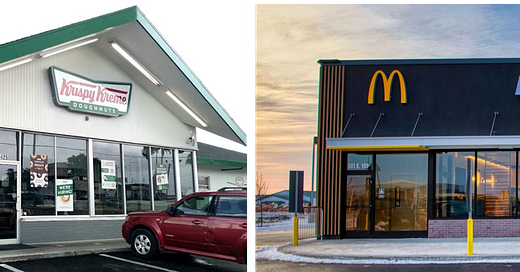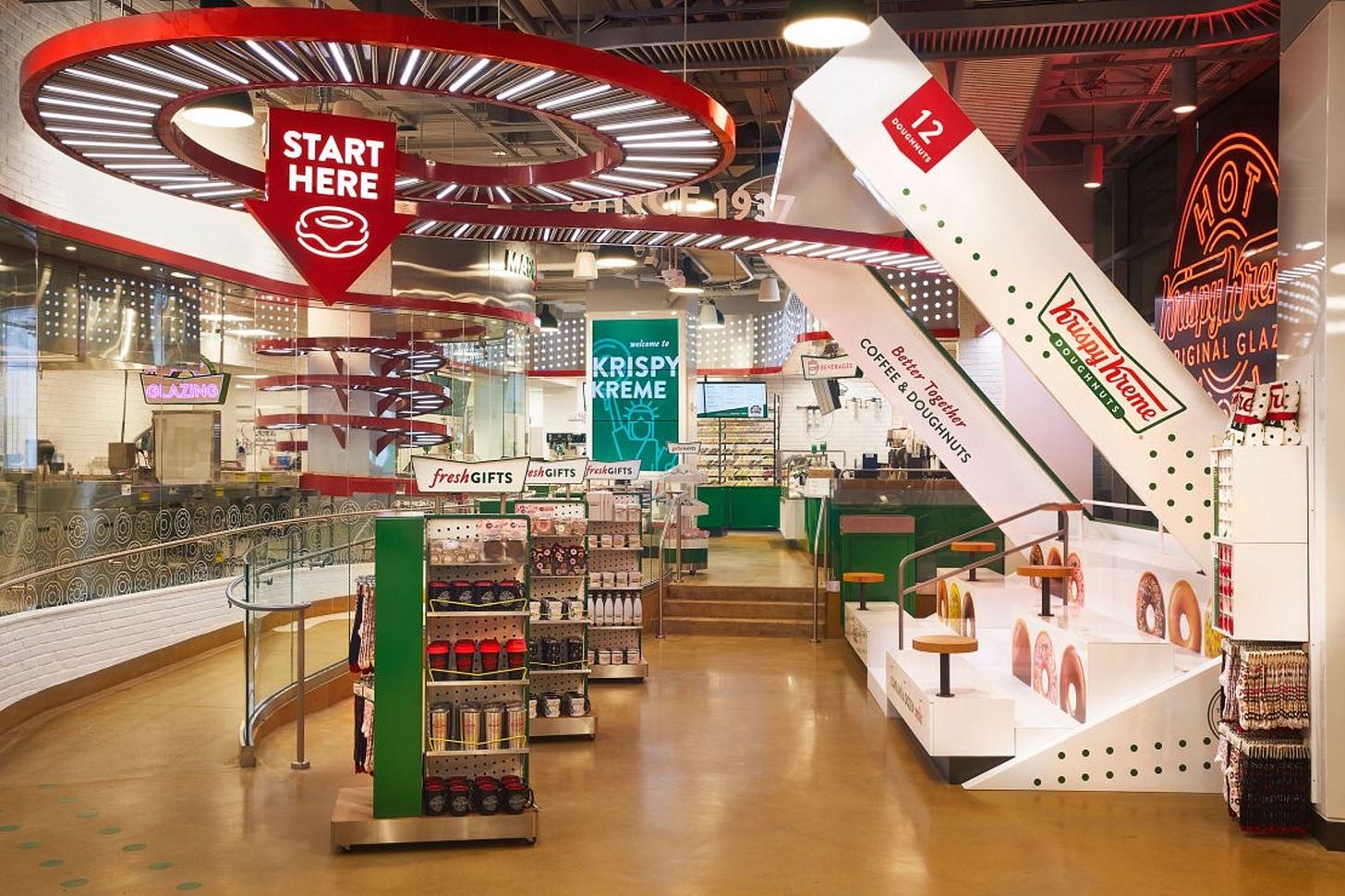How Krispy Kreme's Expanded Partnership With McDonald's Will Impact Its Hub and Spoke Real Estate Model
More Doughnut Hubs Will Be Needed - But In What Type of Real Estate?
Former Krispy Kreme CEO Mike Tattersfield refers to the transformation of the Company under his watch as a shift from a doughnut bakery to a “doughnut logistics company.”
And logistics will be ever more important in light of the expanded partnership between Krispy Kreme and McDonald’s that was revealed last week.
By 2026 Krispy Kreme doughnuts will be available for sale in all U.S. McDonald’s restaurants.
But what additional real estate will Krispy Kreme need to scale up production and deliver doughnuts to all 14,000+ McDonald’s restaurants throughout the country?
Krispy Kreme operates a ‘hub and spoke’ real estate model for the production and distribution of doughnuts.
The way it works is straightforward:
Most Krispy Kreme doughnuts are baked at ‘hubs’ - which consist of both dedicated production factories as well as ‘Hot Light' theater shops where doughnuts (and other items) are not only shipped out but also sold to customers onsite.
Doughnuts are then distributed fresh daily (DFD) from individual Krispy Kreme hubs to dozens of ‘spokes’ such as gas stations, grocery stores and restaurants.
In a hub and spoke model, most activities are carried out at the hub rather than the individual nodes.
So while the establishment of the hub may require a major capital investment, new spoke additions can easily be created - at a relatively small expense - and generate significant economies of scale.
For instance, while it may cost Krispy Kreme over $3 million to develop a new Hot Light theater shop, the investment to open a shop where doughnuts are sold but not baked is generally under $500,000.
And it costs less than $10,000 to set up new DFD cabinets in a grocery store or gas station.
So the capital costs associated with serving the 14,000 U.S. McDonald’s restaurants primarily consist of the new hub real estate that Krispy Kreme will need to serve the additional spokes.
Krispy Kreme currently operates approximately 150 U.S. hubs that collectively distribute to just under 6,000 DFD spokes.
If allocated on average, each domestic hub delivers to approximately 40 other sites.
Krispy Kreme’s 40 international hub stores are even more efficient. They serve 4,000 access points - or 100 per hub - and generate nearly $10 MM in average annual revenue per hub, or about twice the amount of a domestic Krispy Kreme hub.
But if Krispy Kreme can make its domestic hubs as efficient as its international hubs, it will be able to double the number of its U.S. spokes without adding new production hubs or restaurants - and serve roughly 1/2 of the 14,000 McDonald’s restaurants.
But that will still leave Krispy Kreme with the need to add at least 70 additional domestic hubs to support the other 7,000 McDonald’s by 2026.
It will need to locate these hubs throughout the country as the McDonald’s restaurants are spread across urban, suburban and rural areas in all fifty states.
Which leads us to an important question for Krispy Kreme executives as the Company’s hub-and-spoke model expands to support its growth:
What is the best real estate for a doughnut hub?
Krispy Kreme has dropped some hints as to the type of real estate it is seeking to build out its hub capacity:
Adaptive Reuse - Krispy Kreme noted that it has secured vacant buildings in Miami, Minneapolis and Los Angeles for conversion into production hubs - and that the retrofit of this second generation space should speed its time to market.
Larger Hot Light Theater Shops - Company executives have hinted at larger footprints for its future hub restaurants, including ample ‘back of the house’ space and dedicated logistics areas to facilitate the DFD spoke operation.
“Off The Beaten Path” Locations - Former CEO Mike Tattersfield noted that while that ‘main and main’ locations are ideal to attract and serve retail customers, they may not be as conducive for the constant truck and delivery traffic that is common at a high volume hub - and might compel the Company to locate some hubs in less prominent locations.
Ultimately, Krispy Kreme is likely to test many different real estate markets, building sizes and formats as it builds out its nascent hub and spoke model and takes on the challenging of tripling its spoke network to service the McDonald’s partnership.
So to those with both creative real estate and logistics minds:
Perhaps Krispy Kreme executives may be open to ideas and suggestions on the best real estate for a doughnut hub!









